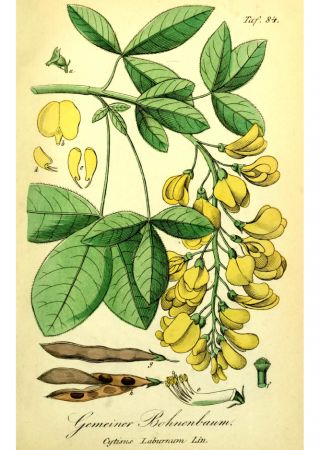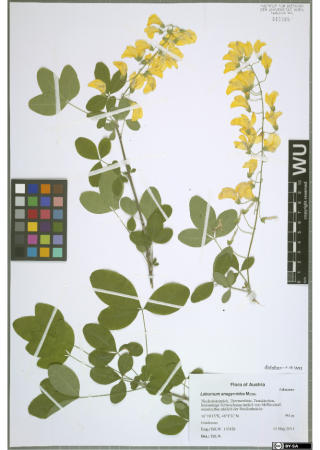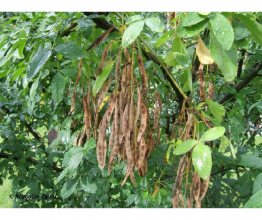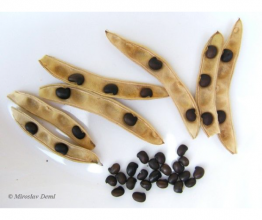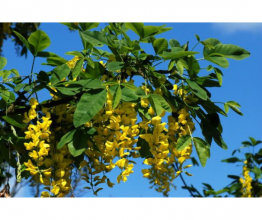Common Laburnum
- ...during WWI, experiments were conducted aimed at using laburnum to replace tobacco (the principal psychoactive chemical is cytosine, a poisonous alkaloid with similar effects to nicotine)?
- ...because of the beauty of the flowering bush, it has been deliberately cultivated in southern European gardens since the late middle ages, and around 1560 was introduced north of the Alps, into England and even the United States?
- ...in earlier times, the seeds and leaves were used as a psycho-pharmaceutical agent to treat excessive irritability, psychoneurotic illnesses, migraines, chronic arsenic poisoning and liver ailments?
- ...most poisonings occur in children, from playing with pods and seeds?
- ...a fatal dose for children is three to four pods, or twelve to fifteen seeds of laburnum?
Basic information:
Division – angiosperms (Magnoliophyta)
Class – eudicots (Rosopsida)
Maximum height – 7 m
Distribution – southern and southwestern Europe
Type of poison – cytosine
Distinguishing marks:
A robust shrub or small tree with smooth gray bark, reaching heights of up to seven meters. It has long, veined, trifoliate leaves, with variously fuzzy undersides. It blooms from April through May with profuse cascades of labiates yellow racemes. Pods are bean-like, colored brownish-gray.
Also known as golden rain or golden chain. It originated in southern and southwestern Europe. A secondary origin is ascribed to Scandinavia. It is frequently planted in parks and gardens as an ornamental shrub, due to its pendulous racemes of bright yellow flowers. Its hardy character also led to it frequently being planted around schools, and this was a frequent source of mass poisonings in children. Cytosine is present primarily in the flowers, seeds and roots. Initial symptoms of poisoning appear thirty minutes to an hour after ingestion, and include burning mouth, nausea and vomiting. Subsequent symptoms are intense stomach and intestinal cramps, sweating, headaches and muscle spasms, up through circulatory failure. Fatal poisonings are manifested as whole-body paralysis with death from lung paralysis in one to several hours.

